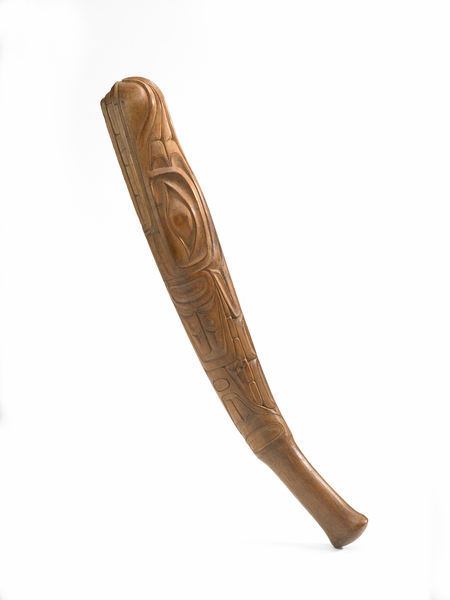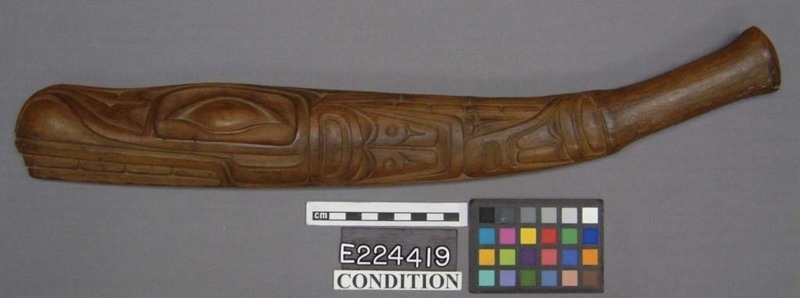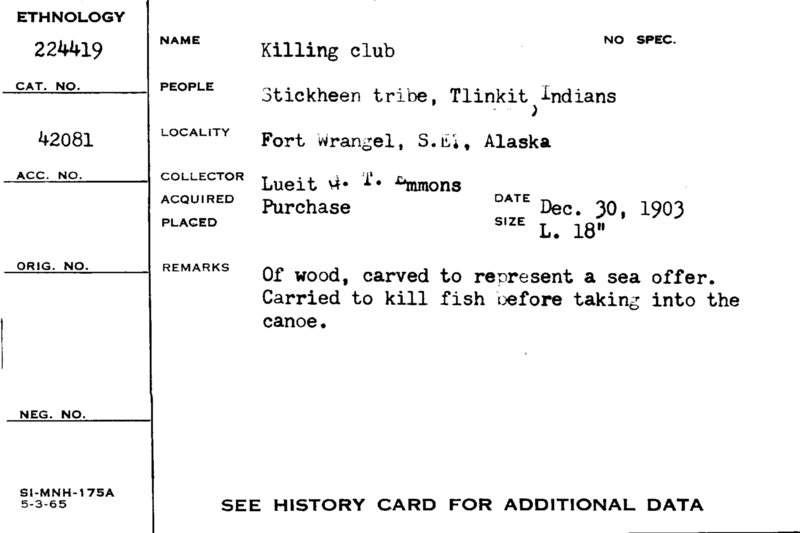Fish Killing Club Item Number: E224419-0 from the National Museum of Natural History







Notes
From card: "Of wood, carved to represent a sea offer [sic, should be sea otter, not offer]. Carried to kill fish before taking into canoe." Illus. Fig. 412, p. 295 in Fitzhugh, William W., and Aron Crowell. 1988. Crossroads of continents: cultures of Siberia and Alaska. Washington, D.C.: Smithsonian Institution Press. Identified there: Killer Whale Fish Club, Tlingit. "Clubs of hardwood, sometimes elaborately carved as animals or spirit allies, were used to kill halibut and salmon. Seals and sea otter were killed the same way. Very often these carvings took the form of predators like sea lions or killer whales - animals that feed on salmon and seals."This object is on loan to the Anchorage Museum at Rasmuson Center, from 2010 through 2027.Source of the information below: Smithsonian Arctic Studies Center Alaska Native Collections: Sharing Knowledge website, by Aron Crowell, entry on this artifact http://alaska.si.edu/record.asp?id=664, retrieved 3-31-2012: Fish Club. Halibut fishermen used wooden clubs to kill or stun their catch; otherwise a heavy, struggling fish might turn over the canoe. The clubs were often beautifully carved, like this one which bears the image of a sea otter. "They didn't want to spoil the head because they were going to cook it, so they were very careful where they hit it [a halibut]. / Yeah, right here in the nostrils. That stunned it and then you turned it over so the belly side was up and then it didn't fight as much. If you leave it belly side down then it bangs the boat a lot." - Delores Churchill (Haida) / Donald Gregory (Tlingit), 2005.
Item History
- Made in Fort Wrangell, Wrangell Island, Alaska, USA
- Collected by Lt. George T. Emmons in Fort Wrangell, Wrangell Island, Alaska, USA during 1903
- Received from St. Louis Louisiana Purchase Exposition 1904 on December 30, 1903
What
- Name
- Fish Killing Club
- Identification Number
- E224419-0
- Type of Item
- club
Who
- Culture
- Tlingit and Stikine
- Field Collector
- Lt. George T. Emmons
- Received from
- St. Louis Louisiana Purchase Exposition 1904
Where
- Holding Institution
- National Museum of Natural History
- Made in
- Fort Wrangell, Wrangell Island, Alaska, USA
- Collected in
- Fort Wrangell, Wrangell Island, Alaska, USA
When
- Collection Date
- during 1903
- Acquisition Date
- on December 30, 1903
Other
- Accession Number
- 042081